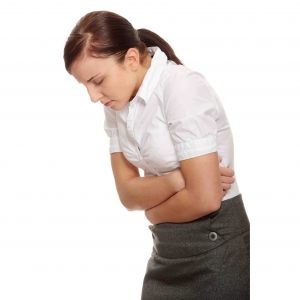Learn about the causes of Stomach Cramps & find a practitioner in Auckland, Hamilton, Bay of Plenty, Wellington, Christchurch, Dunedin to help you overcome Stomach Cramps within New Zealand.
Stomach cramps are involuntary muscle contractions in the abdominal area that cause pain. Stomach cramps can be associated with premenstrual pain (period pain), diarrhoea, IBS or be a symptom of many other conditions. Other pain in the belly or stomach is generally termed abdominal pain as the pain originates from the internal organs rather than the tissue and muscles of the abdominal wall. Abdominal pain can be caused by various conditions that are affecting the internal organs.
Stomach Cramp Causes
Stomach cramps can be caused by a variety of problems within the abdomen. Cramps are in fact muscle spasms that have associated pain but people often refer to stomach cramps to mean pain in the stomach, stomach ache or abdominal discomfort. To determine the problem, it would be necessary to examine the abdomen and identify other symptoms that may be the underlying cause.
For women who are premenstrual or menstrual, stomach cramps are an associated symptom of their monthly period. Menstrual cramps can typically begin a day before the period and subside two days after. Menstrual cramps can be mild to severe and some women experience both menstrual cramps and premenstrual syndrome (PMS) together however the symptoms are not the same.
Stomach cramps can also occur during pregnancy where the abdominal muscles are put under tremendous strain. Exercise, and in particular running, can also result in stomach cramps. Commonly referred to as 'stitch', the causes of this type of stomach cramp are unclear but may be due to the forces placed on the abdominal wall as the organs bounce into each other stretching connective tissue. This connective tissue also attaches to the diaphragm which controls breathing and this is why loss of breath is associated to stitch.
Abdominal pain is an all-encompassing term for pain that covers the area from the lower ribs down to the pelvic bone and flanks of both sides of the body. The abdominal cavity holds the stomach, small intestine, liver, colon, pancreas and gallbladder. Any problems with these internal organs can result in abdominal pain.
Abdominal pain can be caused by inflammation, stretching (distention) or loss of blood supply to the internal organs. Examples of inflammation include appendicitis and ulcerative colitis. An organ can become stretched (or distended) by a blockage within the bile duct (as with the gallbladder) or an obstruction in the intestine. The condition hepatitis causes the liver to swell while conditions such as ischemic colitis cause the loss of blood supply to an organ. All these problems and many more can result in abdominal pain. Diagnosis should be made by a GP.
Other causes of abdominal pain that do not involve inflammation or distention include Irritable Bowel Syndrome (IBS). The actual cause of IBS is still unclear but it is believed to be down to sensitive nerves within the intestine or abnormal intestinal muscle contractions. Abdominal pain may also be a sign of cancer but other less severe conditions should be ruled out before this can be determined.
Stomach cramps are generally felt as a tightening in the stomach as the muscles contract excessively. If nausea is present, this may indicate a virus such as the norovirus (winter vomiting disease) which is one of the common forms of gastroenteritis (infection of the stomach and intestines). For women suffering with menstrual cramps, pain can also be felt in the lower back and legs. Stomach cramps when exercising result in pain to one side of the abdomen and loss of breath.
Abdominal pain symptoms depend upon the condition but the characteristics of the pain can help doctors diagnose the problem. Abdominal pain may come on suddenly through trauma, obstruction within an organ or loss of blood supply. An obstruction in the intestine will typically cause waves of cramping as the intestinal muscles contract. Obstructions in the bile duct will have symptoms of constant upper abdominal pain lasting anywhere from half an hour to many hours. Acute or sharp pain in the upper abdomen and upper back may be a sign of conditions such as pancreatitis.
Pain in the abdomen due to digestive problems will have associated symptoms such as constipation or diarrhoea. In severe cases, rectal bleeding may occur and be noticeable in the stool when going to the toilet. If the source of the problem is in the colon then blood will show as red in colour. If blood is present in the intestines over a longer period then the darker it will become. Higher up within the intestinal tract and the blood is usually black.
Diagnosis
For most stomach cramp pain and abdominal pain, a visit to the GP will provide a diagnosis of the problem. A GP will take a medical history of the pain and perform an abdominal examination.
The GP will listen for sounds coming from the abdomen, any abnormalities from that sound that may provide information about the condition (such as an obstruction in the intestine). The GP will also determine if any inflammation is present and locate any areas that are particularly tender. Should further tests be required, the GP will refer you to a specialist and explain the procedures that will be involved.
*Source: GoToSee.co.uk
Recent Stomach Cramps Questions